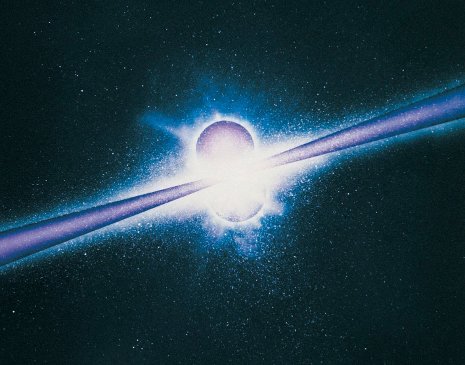A research team comprising Robert Nemiroff and colleagues from the Michigan Technological University has demonstrated that the spacetime may not be as foamy as believed by some researchers.
 Gamma-ray burst
Gamma-ray burst
The research team arrived at this conclusion after analyzing the pathways of three photons of different wavelengths captured by NASA’s Fermi Gamma-ray Space Telescope in May 2009. The photons originated in one of three pulses from a gamma-ray burst that occurred at a distance of roughly 7 billion light years from Earth. They reached the orbiting telescope in a virtual tie that was just one millisecond apart.
Gamma-ray bursts are ephemeral bursts of gamma-ray photons, which are the most energetic light form. Nemiroff informed that gamma-ray bursts provide interesting insights into the universe. Some hypotheses of quantum gravity suggest that the universe is foamy and made of Planck lengths, which are basic units that are below a trillionth of a trillionth the diameter of an atom of hydrogen. Planck lengths can only be detected through photons such as those derived from gamma-ray bursts as their ultra-short wavelengths enable them to interplay with the even tinier Planck length. Photons must be scattered if they interplayed with Planck lengths, thus pixelated spacetime.
Especially, photons must scatter in different ways if they have different lengths. It is not possible to observe this dispersion over short distances, but Planck lengths must scatter the light across billions of light years. Although the three photons have different wavelengths, they reached the Fermi telescope at the same time. This raises question about the actual foamy nature of spacetime.
Nemiroff stated that the research team has demonstrated that the universe is smooth throughout the Planck mass.